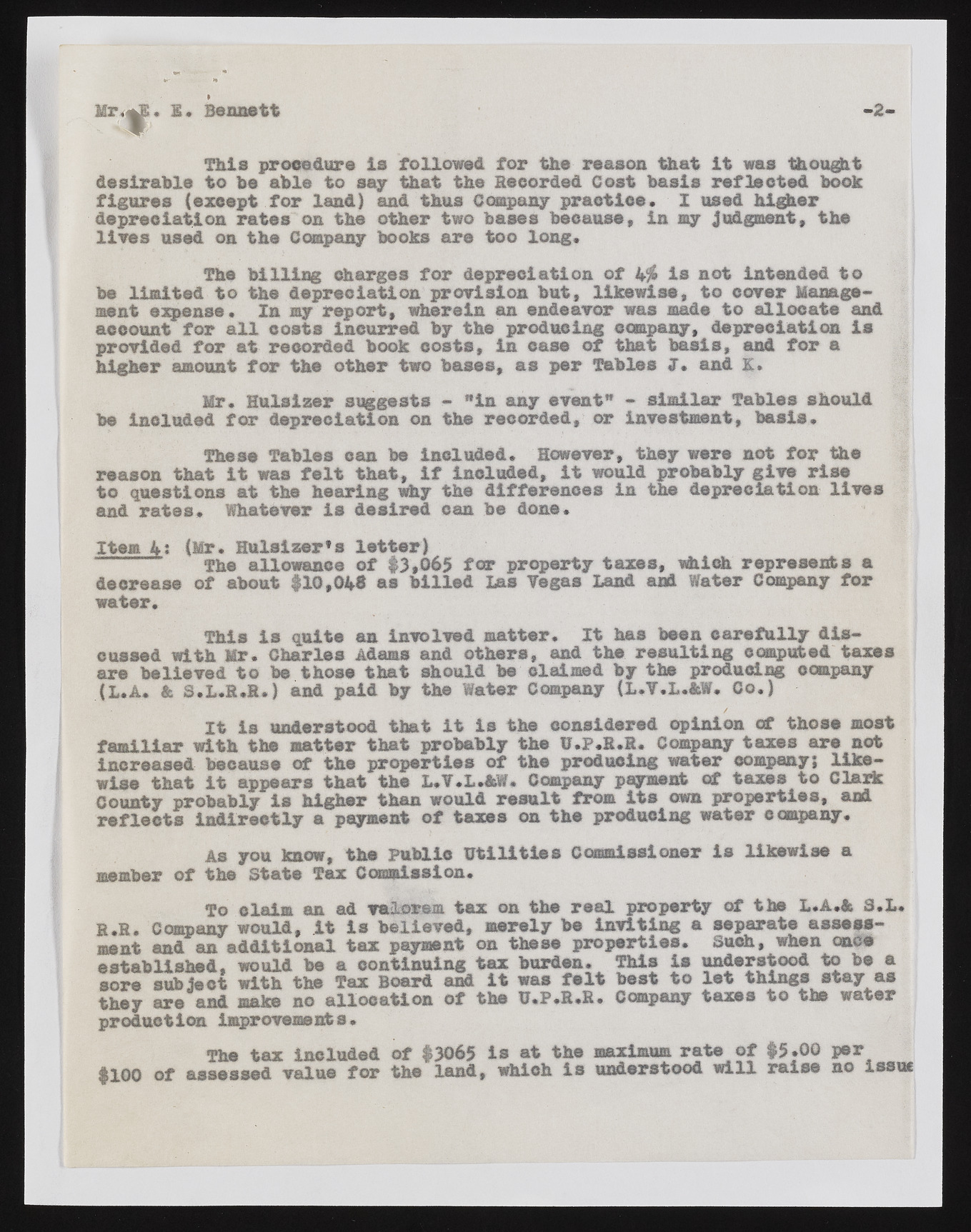Copyright & Fair-use Agreement
UNLV Special Collections provides copies of materials to facilitate private study, scholarship, or research. Material not in the public domain may be used according to fair use of copyrighted materials as defined by copyright law. Please cite us.
Please note that UNLV may not own the copyright to these materials and cannot provide permission to publish or distribute materials when UNLV is not the copyright holder. The user is solely responsible for determining the copyright status of materials and obtaining permission to use material from the copyright holder and for determining whether any permissions relating to any other rights are necessary for the intended use, and for obtaining all required permissions beyond that allowed by fair use.
Read more about our reproduction and use policy.
I agree.Information
Digital ID
Permalink
Details
More Info
Rights
Digital Provenance
Publisher
Transcription
1. Bennett 2- This procedure is followed for the reason that it was thought desirable to he able to say that the Recorded Cost basis reflected book figures (except for land) and thus Company practice. I used higher depreciation rates on the other two bases because, in my Judgment, the lives used on the Company books are too long. The billing charges for depreciation of 4$ is not intended to be limited to the depreciation provision but, likewise, to cover Manage* ment expense. In my report, wherein an endeavor was made to allocate and account for all costs incurred by the producing company, depreciation is provided for at recorded book costs, In ease of that basis, and for a higher amount for the other two bases, as per Tables I. and g. Mr. Hulslzer suggests - "in any event" - similar Tables should be Included for depreciation on the recorded, or investment, basis. These Tables can be included. However, they were not for the reason that it was felt that, if included, it would probably give rise to questions at the hearing why the differences in the depreciation lives and rates. Whatever is desired can be done. Item 4: (Mr* Hulsizer’s letter) The allowance of #3,065 for property taxes, which represents a decrease of about #10,048 as billed las Yegas land and Water Company for water. This is quite an involved matter. It has been carefully discussed with Mr. Charles M a m s and others, and the resulting computed taxes are believed to be those that should be claimed by the producing company (L.A. k S.L.H.R.) and paid by the Water Company (L.Y.L.&W. Co.) It is understood that it is the considered opinion of those most familiar with the matter that probably the U.P.R.R. Company taxes are not increased because of the properties of the producing water company; likewise that it appears that the 1.V.L.&W. Company payment of taxes to Clark County probably is higher than would result from its own properties, and reflects indirectly a payment of taxes on the producing water company. As you know, the Public Utilities Commissioner is likewise a member of the State Tax Commission. To claim an ad valorem tax on the real property of the L.A.& 3.L. R.B. Company would, it is believed, merely be inviting a separate assessment and an additional tax payment on these properties. Such, when once established, would be a continuing tax burden. This is understood to be a sore subject with the Tax Board and it was felt best to let things stay as they are and make no allocation of the U.P.R.R. Company taxes to tbe water production improvements. The tax included of #3065 is at the maximum rate of #5*00 per #100 of assessed value for the land, which is understood will raise no issm

